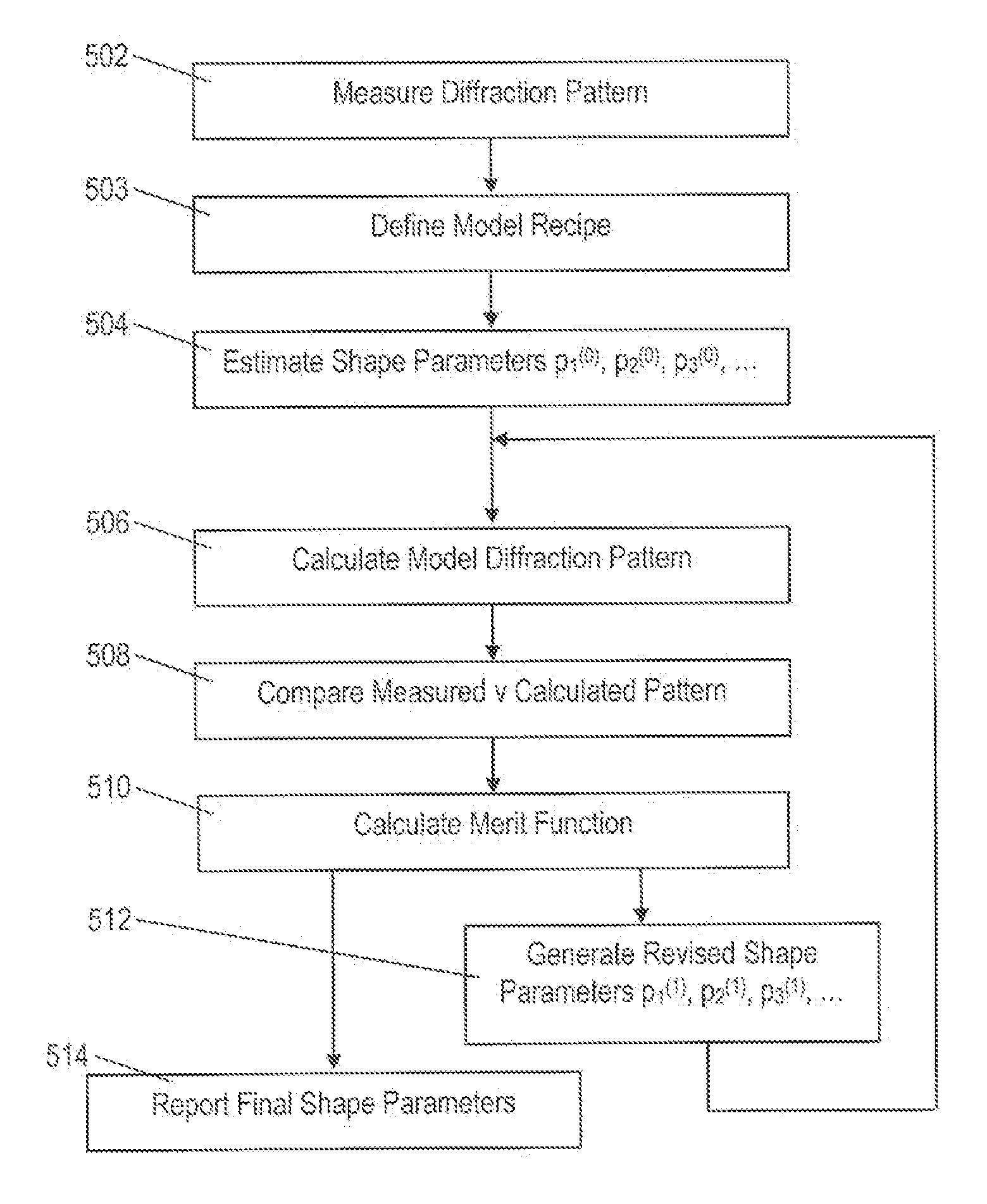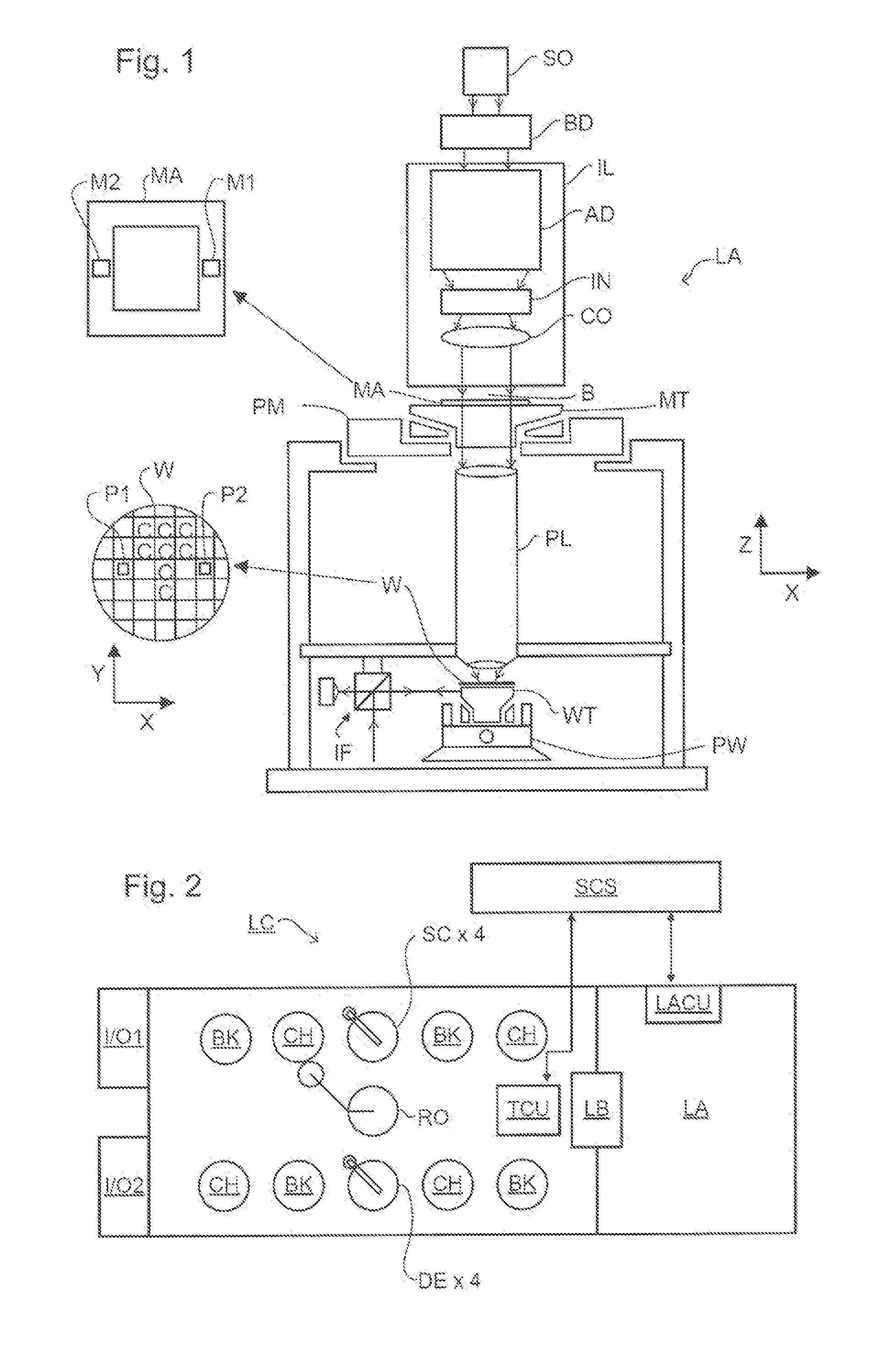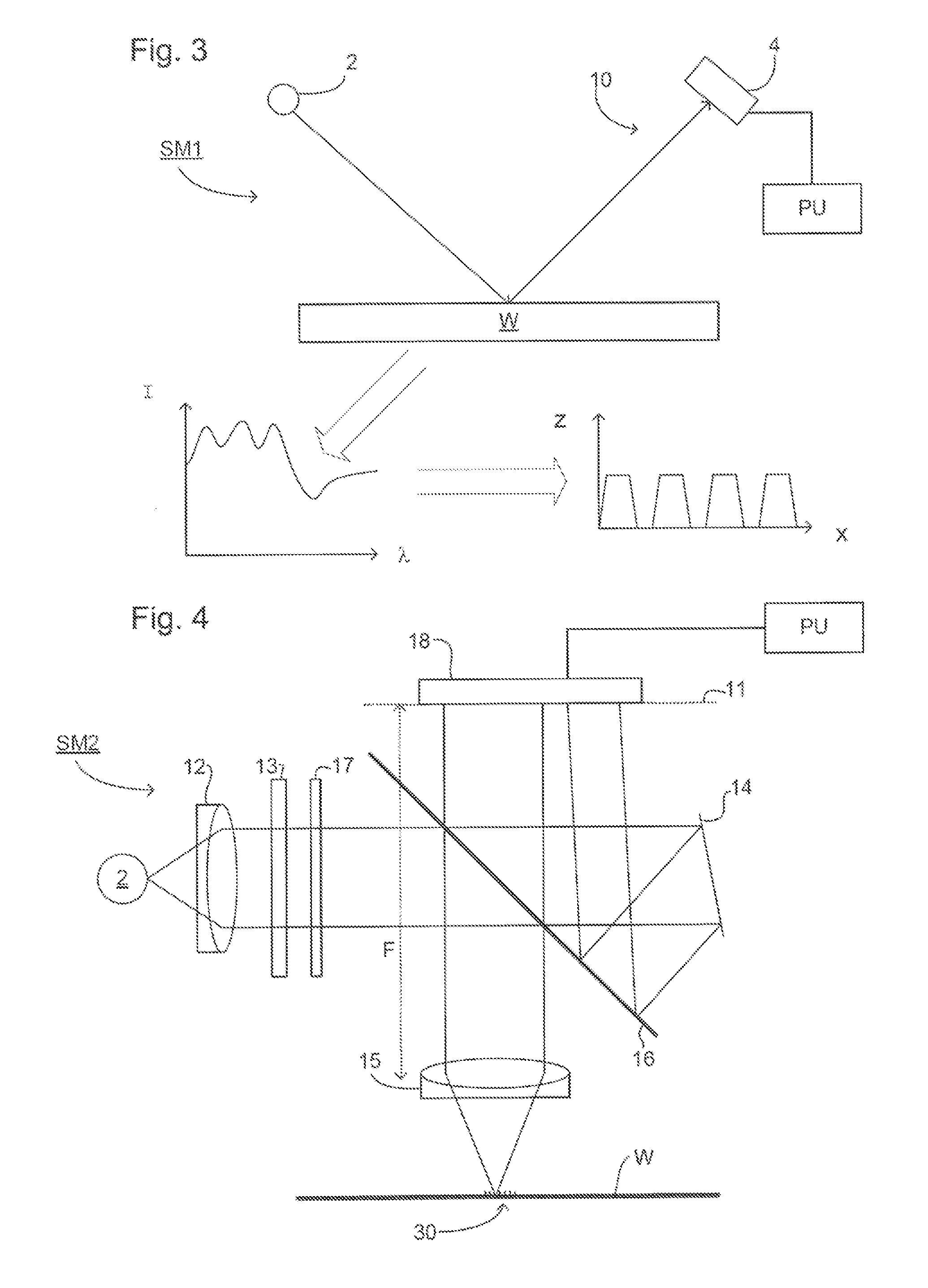Method and Apparatus for Measuring a Structure on a Substrate, Computer Program Products for Implementing Such Methods and Apparatus
a technology of structure and substrate, applied in the direction of photomechanical apparatus, instruments, material analysis by optical means, etc., can solve the problems of large computational tasks, inability to accurately measure the structure on the substrate, and the risk of false matching of parameter sets that do not correspond to the measured substrate, so as to reduce the number of degrees of freedom in the model. , the effect of improving the tool for measuring
- Summary
- Abstract
- Description
- Claims
- Application Information
AI Technical Summary
Benefits of technology
Problems solved by technology
Method used
Image
Examples
first example
LINEAR CONSTRAINT
[0116]A first example for illustrating the principles and benefits of these more generic conditions is a situation where the model contains two correlated parameters. FIG. 8, according to an embodiment of the present invention, shows an example in which the structure of target 30 comprises a substrate 800 with first and second layers 802, 804 formed thereon. First layer 802 has a thickness or height d1 and refractive index n1. Second layer 804 has a height d2 and refractive index n2. Another property of the structure is the sum height of the two layers, labeled dtot. The sum dtot of the two parameters can be made a parameter, and can be determined by any reasonably accurate model with good certainty. The refractive indices, for the sake of this example, are extremely close in value, however. Therefore it will be understood that any optical measurement technique will have difficulty resolving the parameters d1 and d2 individually.
[0117]Referring to FIG. 9(a), accordi...
second example
LINEAR CONSTRAINT
[0122]FIG. 10, according to an embodiment of the present invention, illustrates a second example of the application of linear constraints for improved model recipes. In this case, two generic parameters p1 and p2 are involved. Horizontal and vertical axes correspond to the deviations of these parameters, rather than their absolute values. The uncertainty (noise) in this example is well below the allowed parameter ranges, so that no rectangular bounding box is seen within the diagram. Here, a useful piece of information for the recipe optimization is that we are only interested in measuring one of the parameters, p1. As before, p1 and p2 are correlated so that floating both parameters would give a large uncertainty, while fixing p2 would introduce an unnecessarily large error in p1. The inventors have recognized that a constraint, for example a linear constraint 910 is still possible in many such situations, which will reduce the degrees of freedom in the model and i...
example results
[0126]FIG. 11, according to an embodiment of the present invention, illustrates a complex target structure 30 which for the sake of experiment was formed in 75 separate fields over a 300 mm substrate in a focus-exposure matrix (FEM) process. As is well known, a non-random FEM process is designed to vary parameters of the lithographic steps in a systematic and known way across fields of a substrate such as a silicon wafer. In this target structure, layers A through G are formed in a stack on a substrate 960. The top layer G is patterned using the lithographic apparatus and has shape parameters H_G, MCD_G and SWA_G similar to features 702 in FIG. 7. These three were defined as the parameters of interest. Each underlying layer A to F has its own height (H_A etc.) and material properties. For the purposes of experimentation, nominal values for all heights are known, but only layer A is fixed. Material properties such as refractive index were also fixed. This leaves 10 floating parameter...
PUM
 Login to View More
Login to View More Abstract
Description
Claims
Application Information
 Login to View More
Login to View More - R&D
- Intellectual Property
- Life Sciences
- Materials
- Tech Scout
- Unparalleled Data Quality
- Higher Quality Content
- 60% Fewer Hallucinations
Browse by: Latest US Patents, China's latest patents, Technical Efficacy Thesaurus, Application Domain, Technology Topic, Popular Technical Reports.
© 2025 PatSnap. All rights reserved.Legal|Privacy policy|Modern Slavery Act Transparency Statement|Sitemap|About US| Contact US: help@patsnap.com



